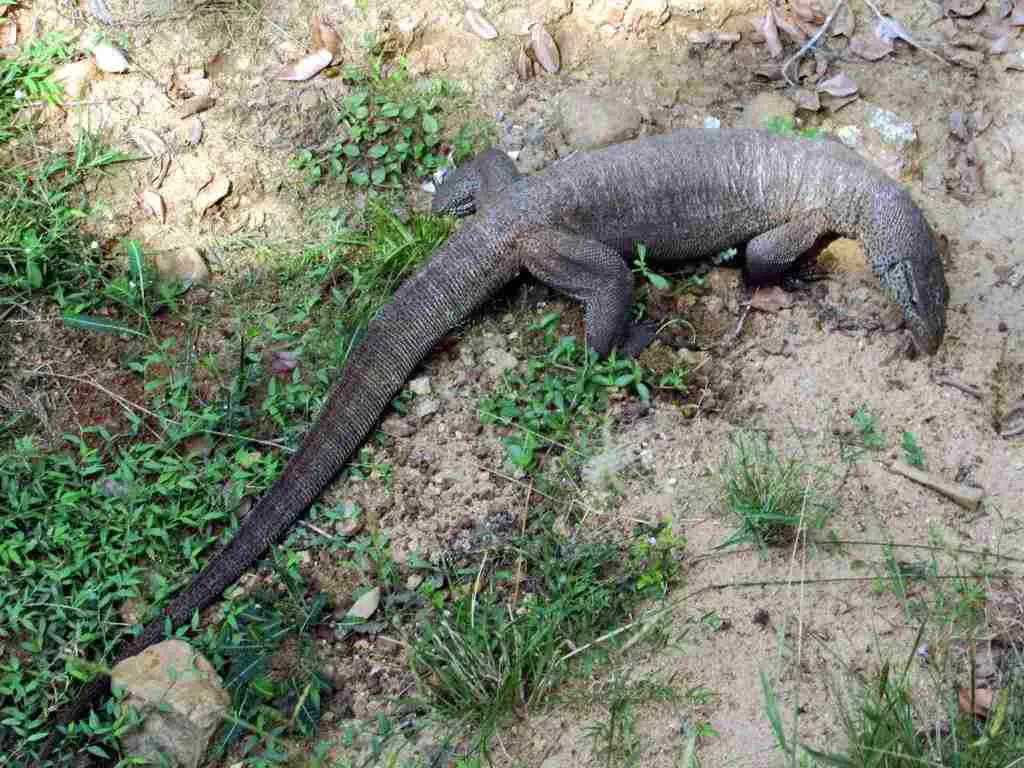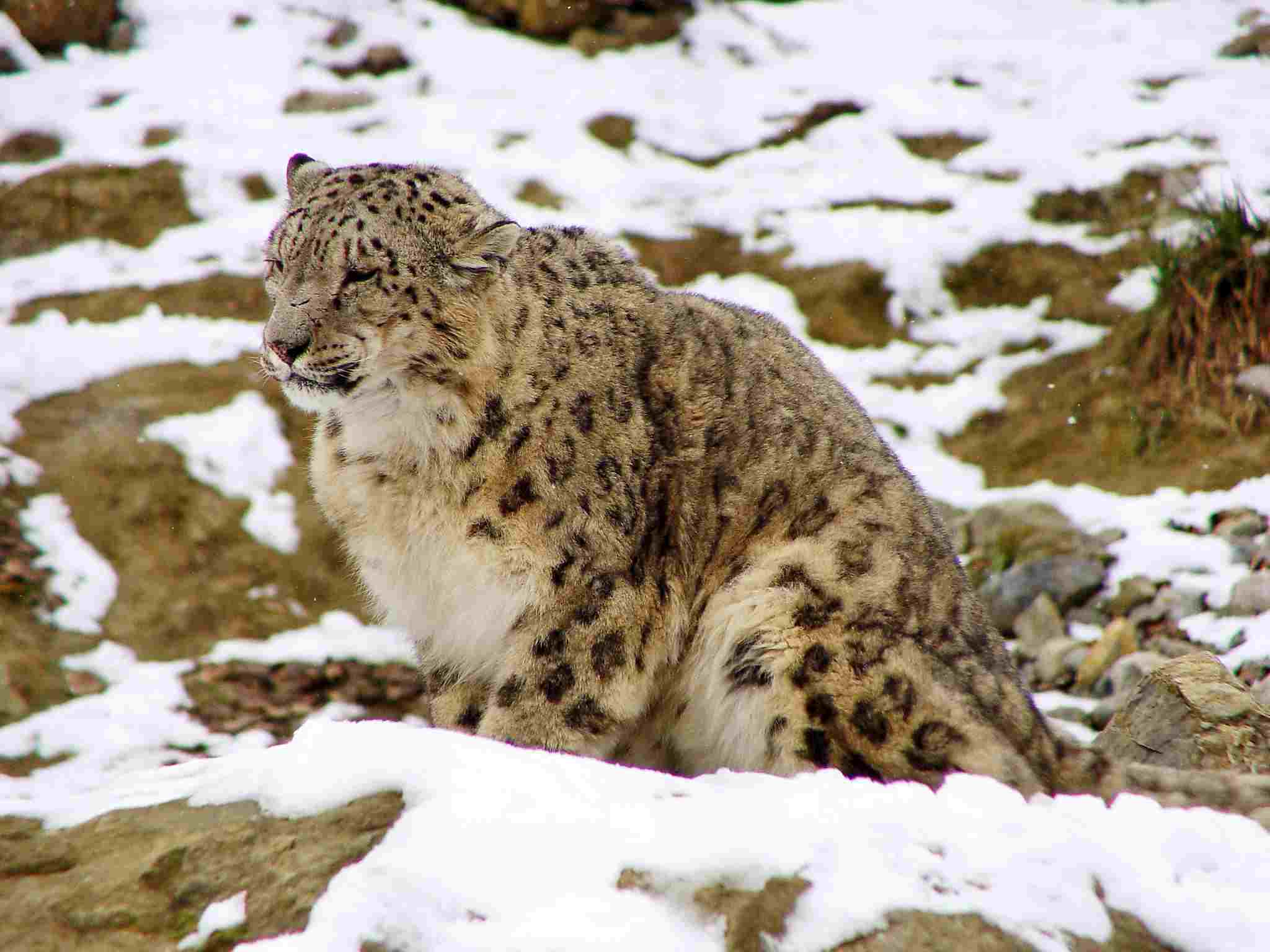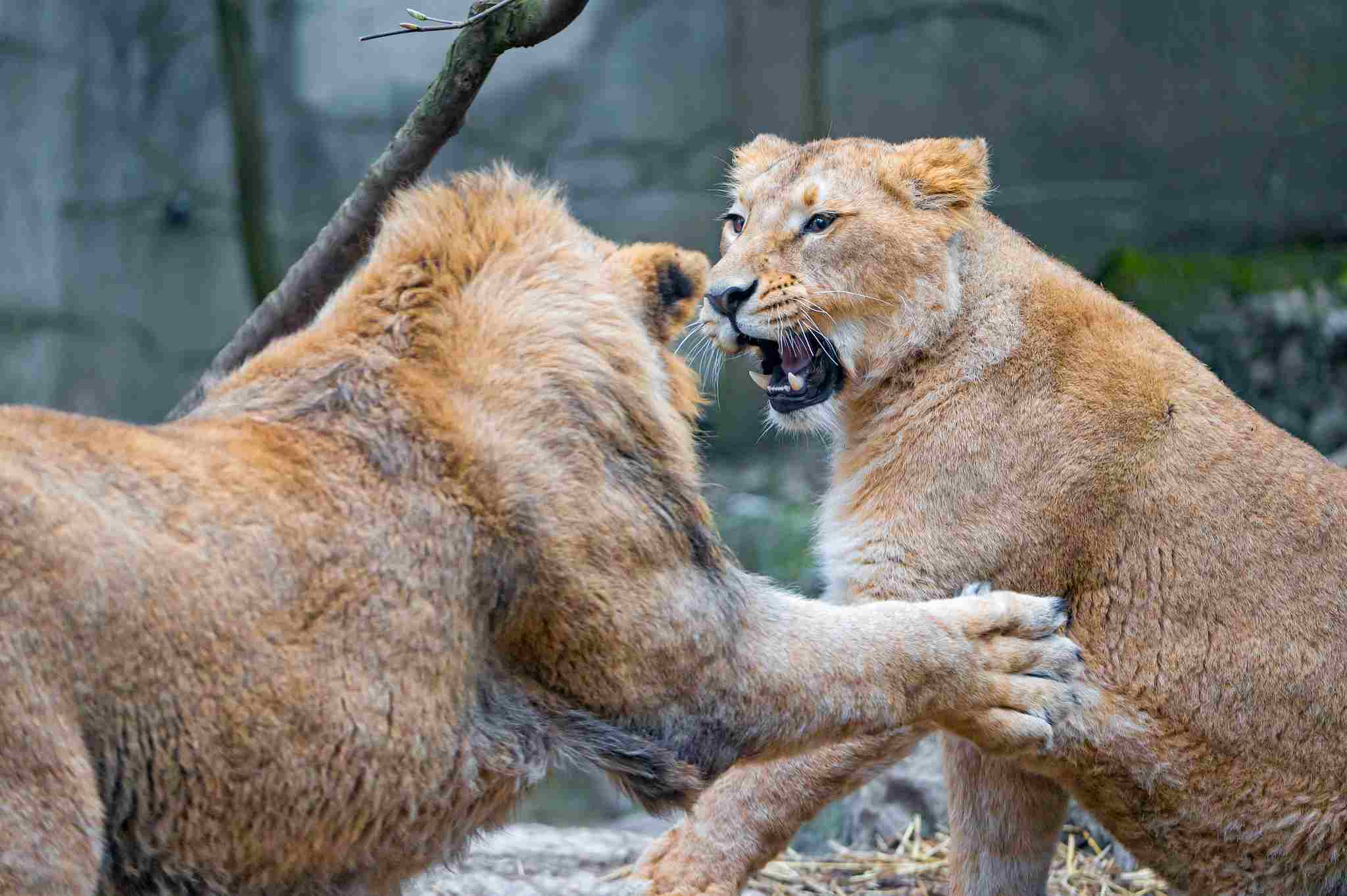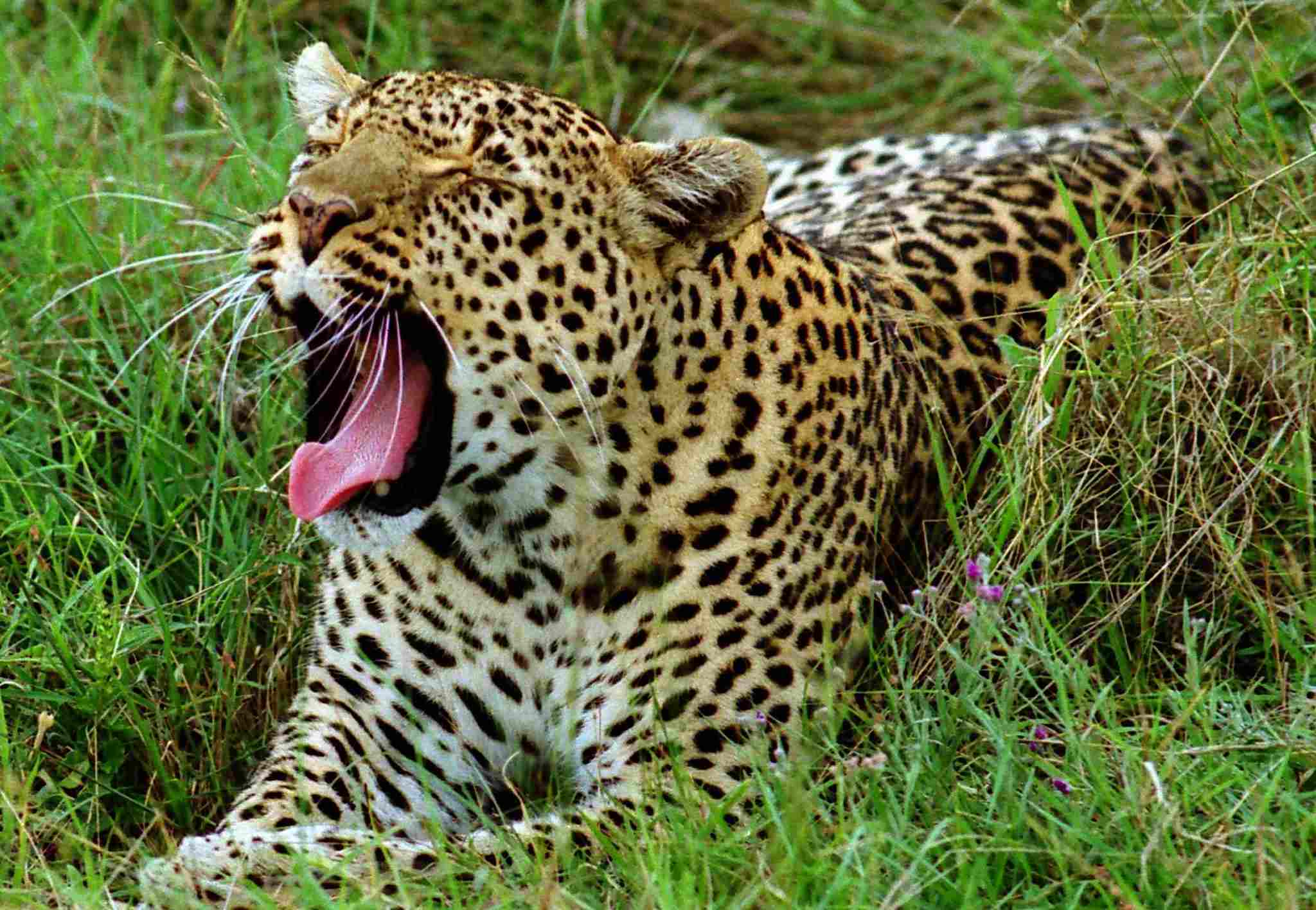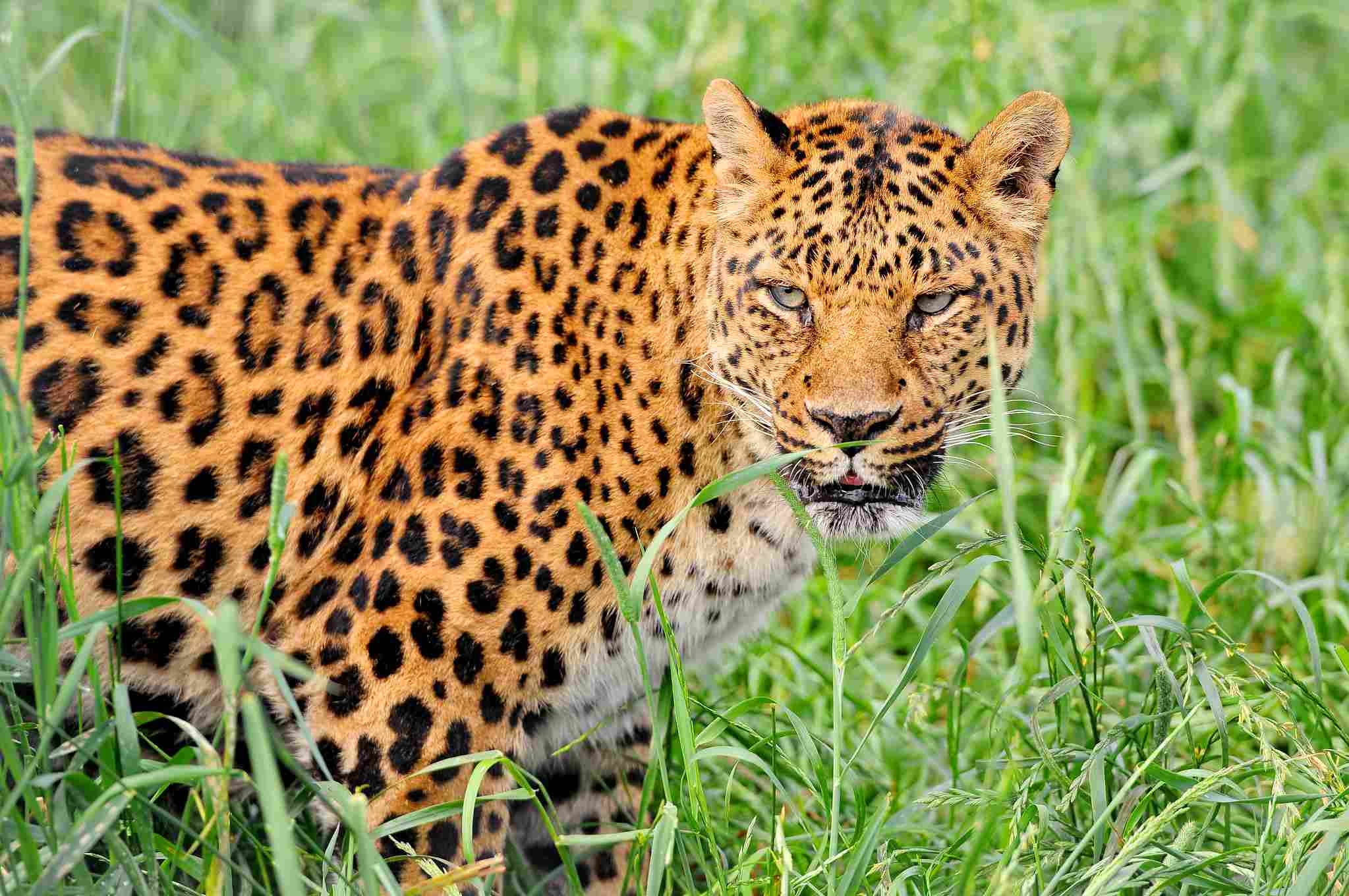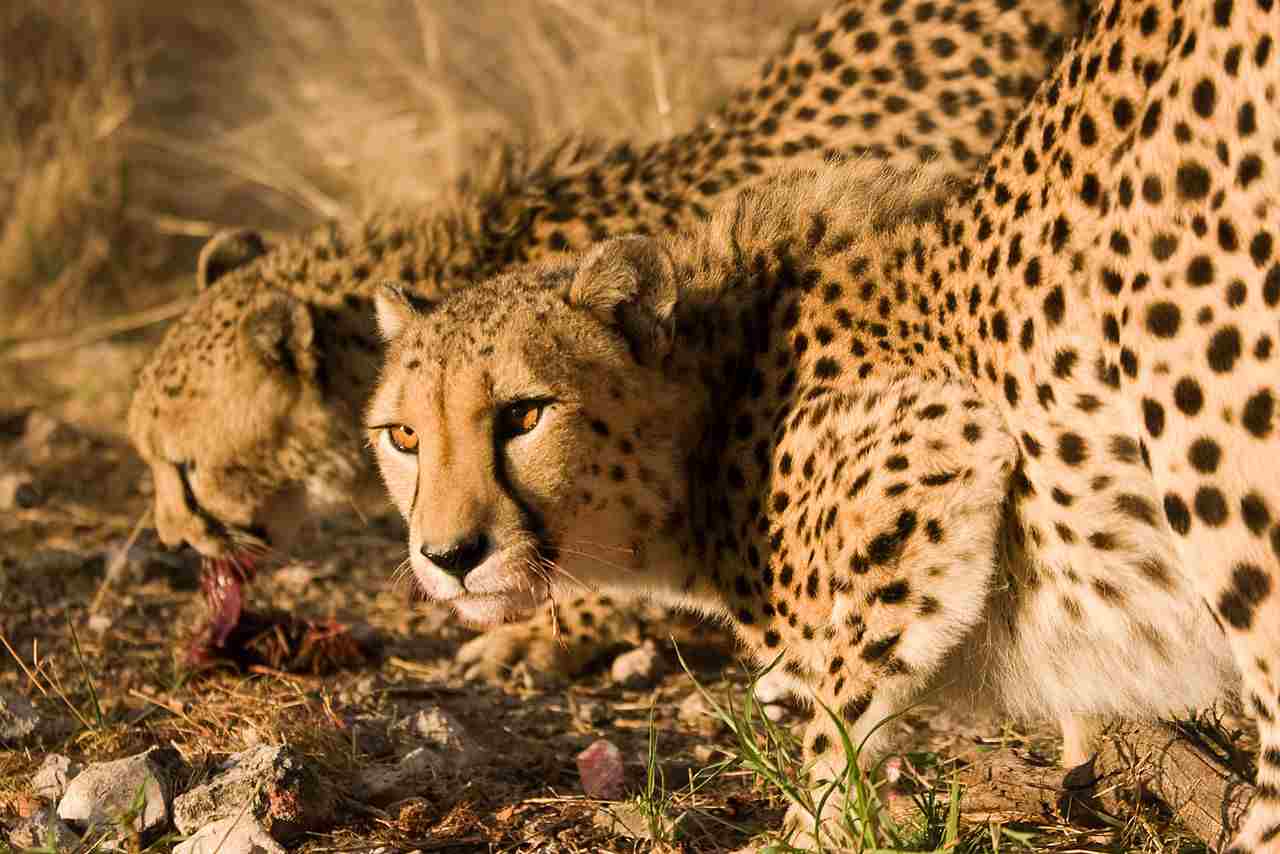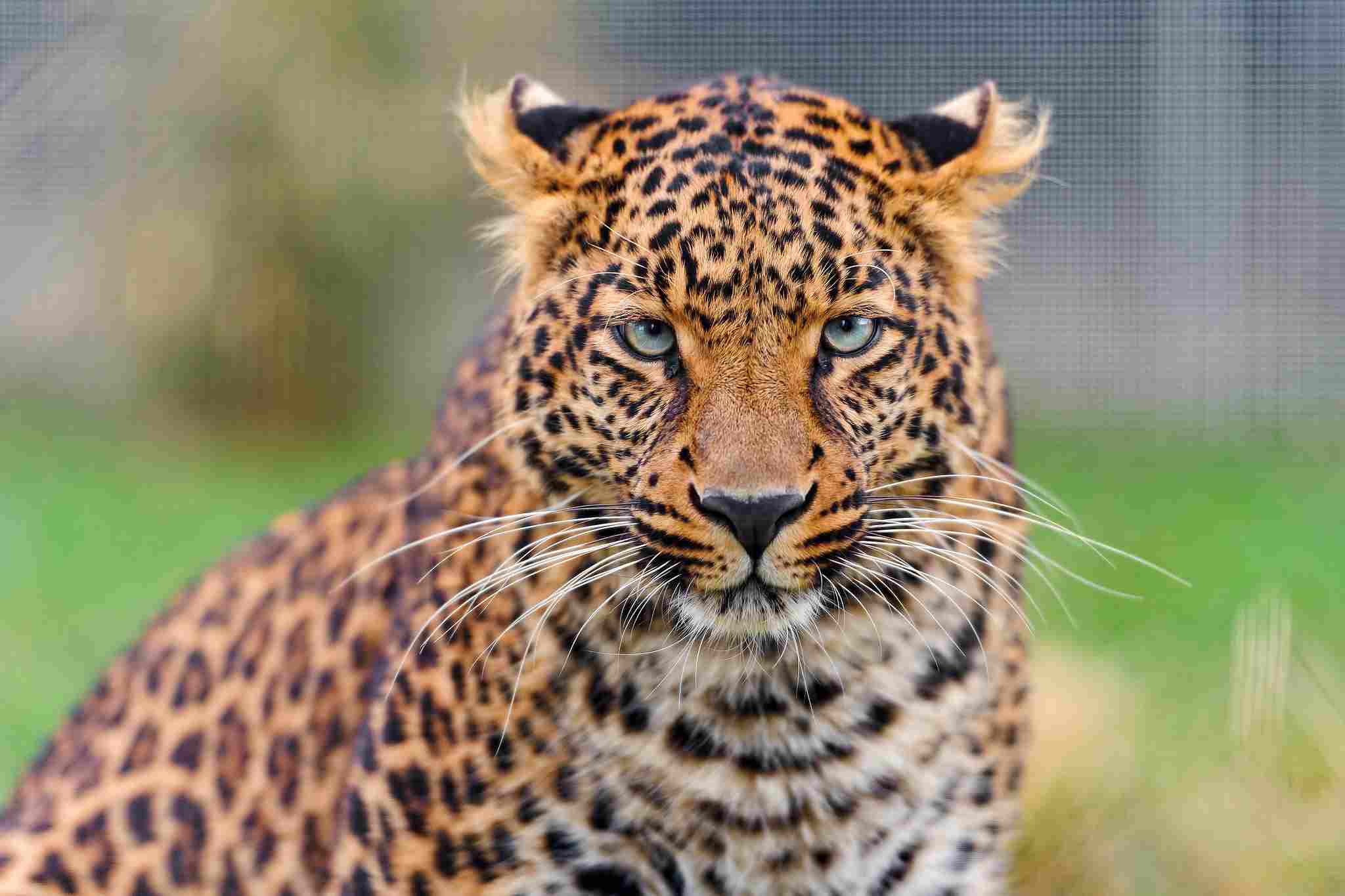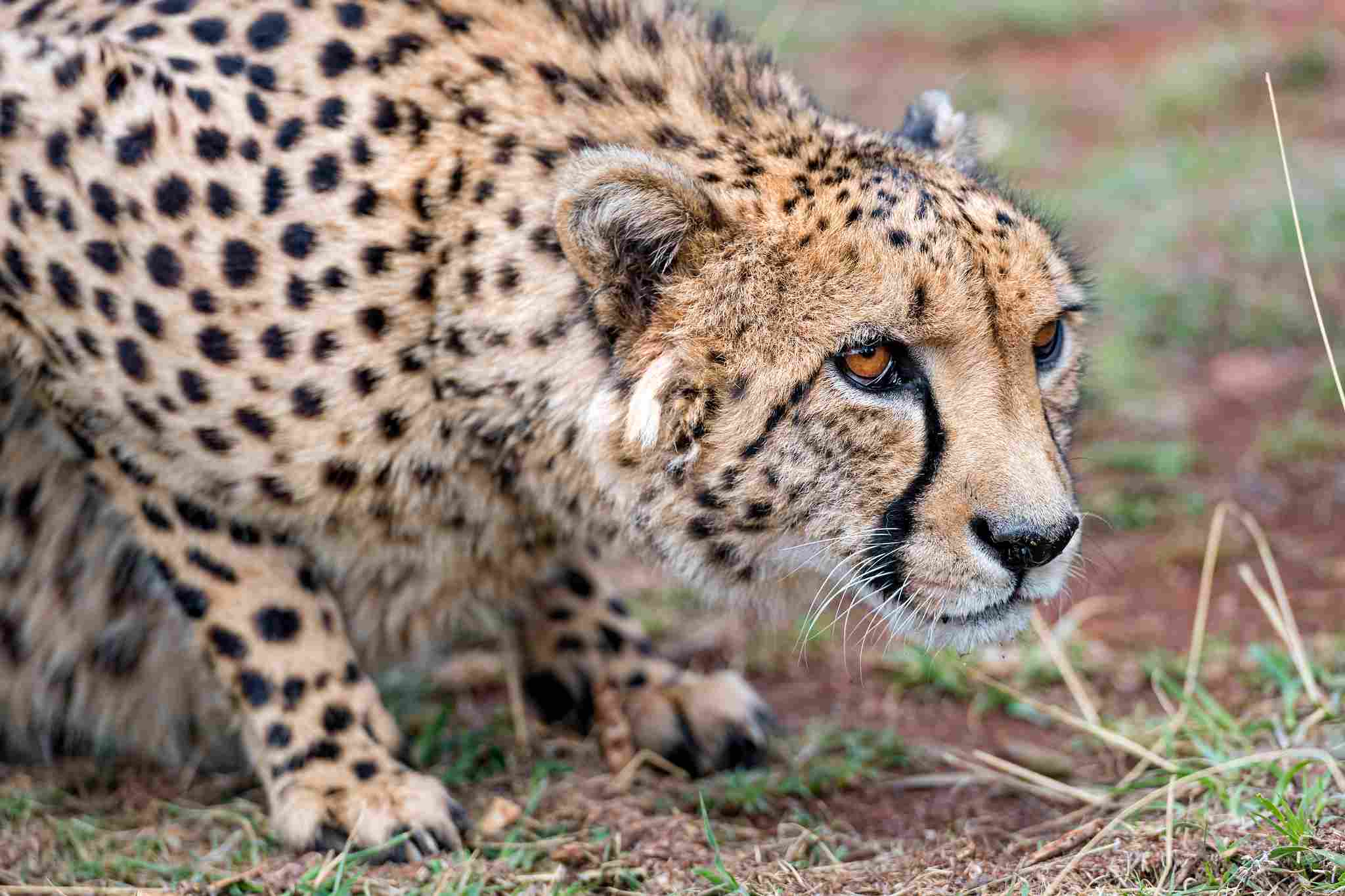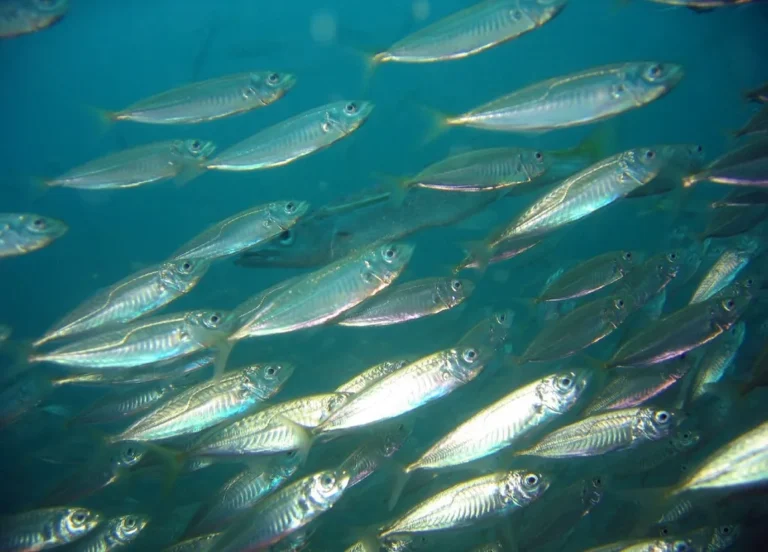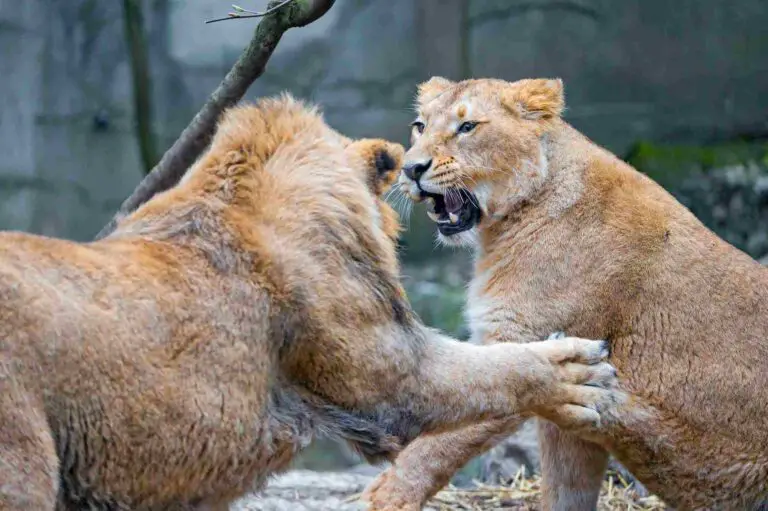13+ Predators In The Grasslands And Their Characteristics
Examples of predators in the grasslands are leopards, lions, hyenas, and cheetahs. These predators play critical roles in maintaining ecological balance by controlling prey populations and reducing competition among other species. However, they often face threats from habitat loss, human-wildlife conflict, and poaching, making conservation efforts essential for their survival and the overall health of the grassland ecosystems.
1. Leopard
The leopard (Panthera pardus) is a master of stealth and adaptability, known for its ability to thrive in a variety of grassland environments. With its muscular build and powerful limbs, the leopard can climb trees with ease, often dragging its prey high into the branches to keep it out of reach from other predators and scavengers. Its spotted coat provides excellent camouflage, allowing it to blend seamlessly into the grassland vegetation. This elusive predator typically hunts at dusk or dawn, using its acute sense of sight and hearing to locate prey, which can range from antelope and deer to smaller mammals and birds.
Leopards are solitary creatures, marking their territories with scent markings and vocalizations to communicate with other leopards. They are highly adaptable and can survive in a range of habitats, including grasslands, forests, and savannas. Despite their solitary nature, leopards play a crucial role in maintaining the ecological balance within their ecosystems by controlling prey populations and reducing competition among other predators. However, habitat loss and poaching pose significant threats to their survival, making conservation efforts critical to ensure these majestic predators continue to roam the grasslands.
2. Lion
The lion (Panthera leo) is often regarded as the king of the grasslands due to its majestic mane and commanding presence. These big cats are the only truly social cats, typically living in groups called prides. A pride is generally composed of related females, their cubs, and a few adult males. Lions primarily inhabit savannas and open woodlands, where they hunt large herbivores such as buffalo, antelope, and zebras. Although they are capable hunters, lions often scavenge or steal kills from other predators, using their size and strength to dominate the competition.
Lions are powerful predators, known for their teamwork and group hunting strategies. The females are the primary hunters, using coordinated tactics to encircle and ambush their prey. Males defend the pride’s territory from intruders and engage in fierce battles with rival prides or lone males. Despite their status as top predators, lions face threats from habitat loss, human-wildlife conflict, and poaching. Conservation efforts aim to protect these iconic animals and their habitats, ensuring they continue to thrive in the grasslands.
3. Hyena
Hyenas, members of the Hyaenidae family, are commonly misunderstood due to their scavenging behavior and distinctive vocalizations. The most well-known species, the spotted hyena (Crocuta crocuta), is native to the grasslands and savannas of sub-Saharan Africa. Despite their reputation as scavengers, spotted hyenas are skilled hunters, capable of taking down large prey like wildebeest and zebra. They often hunt in groups called clans, which can be as large as 80 individuals, with a strict matriarchal hierarchy.
Hyenas are highly adaptable, with a varied diet that includes carrion, small mammals, birds, and even fruits. Their powerful jaws and digestive systems allow them to consume and break down bones, an ability that few other predators possess. This capability helps hyenas play a crucial role in the ecosystem by cleaning up carcasses and reducing the spread of disease. Despite their importance in the grassland ecosystem, hyenas face threats from habitat loss and human conflict, making their conservation a priority.
4. Badger
The badger, belonging to the Mustelidae family, is a small but formidable predator found in grasslands and wooded areas. One of the most well-known species, the European badger (Meles meles), is recognized for its distinctive black-and-white facial stripes. Badgers are primarily nocturnal and spend much of their time in underground burrows, known as setts. These setts can be extensive, with multiple chambers and entrances, and are often shared with other badgers.
Despite their small size, badgers are strong and tenacious predators, feeding on a diverse diet that includes small mammals, birds, reptiles, insects, and even plant matter. They are known for their aggressive behavior when threatened, using their sharp claws and powerful teeth to defend themselves. In grasslands, badgers play a crucial role in controlling insect populations and aerating the soil through their digging activities. However, they are also susceptible to habitat loss and human-wildlife conflict, making their conservation an important consideration.
5. Coyote
The coyote (Canis latrans) is a highly adaptable predator commonly found in North American grasslands, deserts, and forests. Known for its distinctive howl, the coyote has a varied diet, feeding on small mammals, birds, reptiles, insects, and occasionally fruit. Coyotes are opportunistic hunters, often forming small packs or hunting alone, depending on the availability of food. They are also known to scavenge and are frequently seen near human settlements, where they search for food in trash and other waste sources.
Coyotes are known for their intelligence and adaptability, which has allowed them to thrive in a wide range of environments. They are generally solitary but will form small family groups for hunting or raising pups. In grasslands, coyotes play an important role in controlling rodent populations and other small prey species. Despite their adaptability, coyotes often face conflict with humans, leading to control efforts and hunting, which can impact their populations. Conservation efforts focus on balancing coyote populations with human interests to ensure they continue to play their role in the ecosystem.
6. Wolf
Wolves (Canis lupus) are the largest members of the canine family and are highly social predators that typically live and hunt in packs. They are native to a variety of ecosystems, including grasslands, forests, and tundra. Wolves are known for their cooperative hunting strategies, often targeting large ungulates such as elk, deer, and bison. A typical wolf pack consists of an alpha male and female, their offspring, and sometimes additional related wolves. The pack’s social structure is complex, with clear hierarchies and roles among its members.
Wolves play a crucial role in maintaining the balance of ecosystems by regulating prey populations and promoting biodiversity. In grasslands, they help keep herbivore numbers in check, which in turn supports the growth of vegetation and the health of the ecosystem. However, wolves have historically faced persecution from humans due to their perceived threat to livestock and human safety. Conservation efforts aim to protect and reintroduce wolf populations in areas where they have been extirpated, highlighting their importance in maintaining ecological balance.
7. African Wild Dog
The African wild dog (Lycaon pictus) is a highly endangered predator native to the grasslands and savannas of sub-Saharan Africa. Known for its striking coat with irregular patches of black, white, and brown, the African wild dog is one of the most social canids, living in large packs that can number up to 20 individuals. These packs are tightly knit, with a strong sense of cooperation and communication among members. African wild dogs are also known for their high-speed chases and coordinated hunting techniques, often targeting medium-sized ungulates such as impalas and gazelles.
African wild dogs are highly efficient hunters, with a success rate that surpasses many other predators. Their cooperative behavior and tight social bonds allow them to take down prey larger than themselves, and they share their kills with the entire pack, including the pups and older members. Despite their hunting prowess, African wild dogs face significant threats, including habitat loss, human-wildlife conflict, and disease. Conservation efforts focus on preserving their habitats and reducing conflict with human activities to ensure these unique predators continue to thrive in the grasslands.
8. Caracal
The caracal (Caracal caracal) is a medium-sized wildcat found in grasslands, savannas, and arid regions across Africa and parts of Asia. With its distinctive long tufted ears and sleek build, the caracal is a highly skilled hunter. It primarily hunts small to medium-sized prey such as birds, rodents, and hares. Caracals are known for their remarkable agility and leaping ability, capable of jumping several feet into the air to catch birds in flight.
Caracals are solitary and primarily nocturnal, preferring to hunt during the cooler hours of the day or night. They are highly adaptable and can survive in a variety of environments, from dense forests to arid deserts. In grasslands, they play a key role in controlling rodent and bird populations, contributing to the overall health of the ecosystem. Despite their adaptability, caracals face threats from habitat loss and human-wildlife conflict, particularly in regions where they are considered a threat to livestock. Conservation efforts focus on protecting their habitats and reducing conflicts with humans to ensure their survival.
9. Serval Cat
The serval cat (Leptailurus serval) is a slender, long-legged wildcat found in African grasslands and savannas. Known for its large ears and spotted coat, the serval is one of the most agile and acrobatic wildcats, capable of jumping up to 12 feet in pursuit of prey. Servals primarily hunt small mammals, particularly rodents, but their diet also includes birds, reptiles, and insects. Their long legs and excellent hearing allow them to detect and capture prey with remarkable precision.
Servals are solitary and typically hunt at night, relying on their keen senses to locate and stalk prey in the dense grasslands. They are highly adaptable and can thrive in a variety of habitats, from wetlands to arid savannas. Despite their adaptability, servals face threats from habitat loss, poaching, and human-wildlife conflict, particularly in regions where they are considered a threat to livestock. Conservation efforts focus on protecting their habitats and reducing conflicts with humans to ensure the continued survival of this unique and agile predator.
10. Snake
Snakes are a diverse group of reptiles found in grasslands, forests, deserts, and aquatic environments. In grasslands, snakes play a crucial role in controlling rodent populations and other small prey. Common grassland snakes include various species of pythons, boas, and vipers. Depending on the species, snakes can be venomous or non-venomous, with venomous snakes using their toxic venom to subdue prey quickly. Non-venomous snakes, on the other hand, typically use constriction to kill their prey.
Snakes are cold-blooded and rely on their environment to regulate their body temperature, often basking in the sun to warm up and seeking shade or burrows to cool down. In grasslands, they are skilled at camouflaging with their surroundings, making them excellent predators and elusive to spot. Despite their ecological importance, snakes often face persecution due to fear and misunderstanding. Conservation efforts aim to protect snake habitats and educate the public on the vital role snakes play in the ecosystem.
11. Monitor Lizard
Monitor lizards (Varanus spp.) are large reptiles found in grasslands, forests, and other environments across Africa, Asia, and Australia. These reptiles are known for their size, strength, and predatory abilities. Some species, like the Komodo dragon, are among the largest lizards in the world, while others, like the savannah monitor, are smaller but equally capable predators. Monitor lizards are opportunistic feeders, consuming a wide range of prey including insects, small mammals, birds, eggs, and carrion.
Monitor lizards have powerful limbs and sharp claws, allowing them to climb, dig, and swim efficiently. They are also known for their intelligence and problem-solving abilities, often outsmarting other predators and prey. In grasslands, monitor lizards contribute to the ecosystem by controlling small prey populations and cleaning up carrion. Despite their resilience, monitor lizards face threats from habitat loss, hunting, and the pet trade, making conservation efforts important to ensure their continued survival in the wild.
12. Hawk
Hawks are birds of prey belonging to the Accipitridae family, known for their sharp talons and keen eyesight. They are common in grasslands, forests, and mountainous regions, where they play an important role in controlling rodent and bird populations. Hawks have a diverse diet, with different species specializing in different types of prey. They are known for their exceptional hunting skills, often swooping down from great heights to capture prey with remarkable speed and accuracy.
In grasslands, hawks typically build their nests in high trees or cliffs, providing a vantage point for hunting. They are often solitary or live in small family groups, with both parents participating in raising and feeding their young. Despite their adaptability and resilience, hawks face threats from habitat loss, pesticide use, and human-wildlife conflict, particularly in areas where they are seen as a threat to livestock or game birds. Conservation efforts focus on protecting hawks’ habitats and reducing human-induced threats to ensure their continued presence in grasslands and other ecosystems.
13. Fox
Foxes are small to medium-sized canids found in various environments, including grasslands, forests, and urban areas. The most common species, the red fox (Vulpes vulpes), is known for its vibrant red fur and bushy tail. Foxes are opportunistic predators, with a diet that includes small mammals, birds, insects, fruits, and even human leftovers in urban settings. Their adaptability and intelligence make them successful in a wide range of environments, from rural to urban landscapes.
In grasslands, foxes play a crucial role in controlling rodent populations and other small prey, contributing to the ecological balance. They are generally solitary, but will form small family groups during the breeding season to raise their young. Foxes are also known for their cunning and agility, which help them evade larger predators and navigate complex landscapes. Despite their adaptability, foxes face threats from habitat loss, hunting, and vehicle collisions, making conservation efforts important to ensure their continued survival in grasslands and beyond.
14. Cheetah
The cheetah (Acinonyx jubatus) is the fastest land animal, capable of reaching speeds up to 70 mph in short bursts. This speed allows them to pursue and catch fast-moving prey, primarily antelope and other small to medium-sized ungulates. Unlike other big cats, cheetahs have slender bodies, long legs, and lightweight frames, all designed for speed and agility. They prefer open grasslands and savannas, where they can use their speed to their advantage during hunts.
Cheetahs are generally solitary or form small family groups, typically consisting of a mother and her cubs or a coalition of brothers. They rely on stealth and speed to catch their prey, often stalking within close range before launching a high-speed chase. Despite their incredible speed and hunting prowess, cheetahs face significant threats from habitat loss, human-wildlife conflict, and competition with other predators like lions and hyenas. Conservation efforts focus on protecting cheetah habitats and reducing human-induced threats to ensure the survival of this unique and majestic predator.
*Summary
-
Leopard
-
Master of stealth, strong climbers, and solitary.
-
Hunts a variety of prey, known for dragging prey into trees.
-
Threatened by habitat loss and poaching.
-
-
Lion
-
Known as the king of grasslands, lives in prides.
-
Hunts large herbivores, relies on group hunting strategies.
-
Faces threats from habitat loss and poaching.
-
-
Hyena
-
Often misunderstood, scavengers, and skilled hunters.
-
Live in large clans, strong matriarchal structure.
-
Play a role in cleaning up carcasses and maintaining ecosystem balance.
-
-
Badger
-
Small but strong, primarily nocturnal, and solitary.
-
Feeds on a varied diet including small mammals and insects.
-
Known for their aggressive behavior when threatened.
-
-
Coyote
-
Highly adaptable, known for its distinctive howl.
-
Hunts small mammals, opportunistic feeders.
-
Often faces conflict with humans.
-
-
Wolf
-
Large and social, living and hunting in packs.
-
Cooperatively hunts large ungulates.
-
Plays a crucial role in ecosystem balance.
-
-
African Wild Dog
-
Endangered, known for its social structure and high-speed chases.
-
Hunts cooperatively, targeting medium-sized ungulates.
-
Faces significant threats from habitat loss and human conflict.
-
-
Caracal
-
Medium-sized wildcat, known for its long tufted ears.
-
Primarily hunts small to medium-sized prey.
-
Faces threats from habitat loss and human-wildlife conflict.
-
-
Serval Cat
-
Slender, long-legged wildcat, known for its agility.
-
Hunts small mammals, particularly rodents.
-
Plays a key role in controlling rodent and bird populations.
-
-
Snake
-
Diverse group of reptiles, plays a crucial role in controlling rodent populations.
-
Can be venomous or non-venomous, depending on species.
-
Often persecuted due to fear and misunderstanding.
-
-
Monitor Lizard
-
Large reptiles, known for their size and strength.
-
Opportunistic feeders, consuming a wide range of prey.
-
Faces threats from habitat loss and the pet trade.
-
-
Hawk
-
Birds of prey, known for their sharp talons and keen eyesight.
-
Contribute to controlling rodent and bird populations.
-
Face threats from habitat loss and pesticide use.
-
-
Fox
-
Small to medium-sized canids, known for their adaptability.
-
Opportunistic feeders, thriving in various environments.
-
Often face threats from habitat loss and human-wildlife conflict.
-
-
Cheetah
-
Fastest land animal, capable of reaching speeds up to 70 mph.
-
Generally solitary or forms small family groups.
-
Threatened by habitat loss, human-wildlife conflict, and competition with other predators.
-
| Predator |
Key Characteristics and Threats
|
| Leopard |
Stealthy, strong climber, threatened by habitat loss and poaching.
|
| Lion |
King of grasslands, group hunting, faces habitat loss and poaching.
|
| Hyena |
Scavenger and hunter, large clans, misunderstood, maintains ecosystem balance.
|
| Badger |
Nocturnal, aggressive, feeds on small mammals and insects.
|
| Coyote |
Highly adaptable, hunts small mammals, faces human conflict.
|
| Wolf |
Social, cooperative hunters, maintains ecosystem balance.
|
| African Wild Dog |
Endangered, social structure, high-speed chases, faces habitat loss.
|
| Caracal |
Wildcat, long tufted ears, faces habitat loss and human-wildlife conflict.
|
| Serval Cat |
Long-legged wildcat, agile, controls rodent populations.
|
| Snake |
Controls rodent populations, venomous or non-venomous, often misunderstood.
|
| Monitor Lizard |
Large reptiles, opportunistic feeders, threatened by habitat loss.
|
| Hawk |
Birds of prey, controls rodent and bird populations, threatened by pesticide use.
|
| Fox |
Opportunistic canids, thrive in various environments, often face human conflict.
|
| Cheetah |
Fastest land animal, threatened by habitat loss, human conflict, and competition.
|
